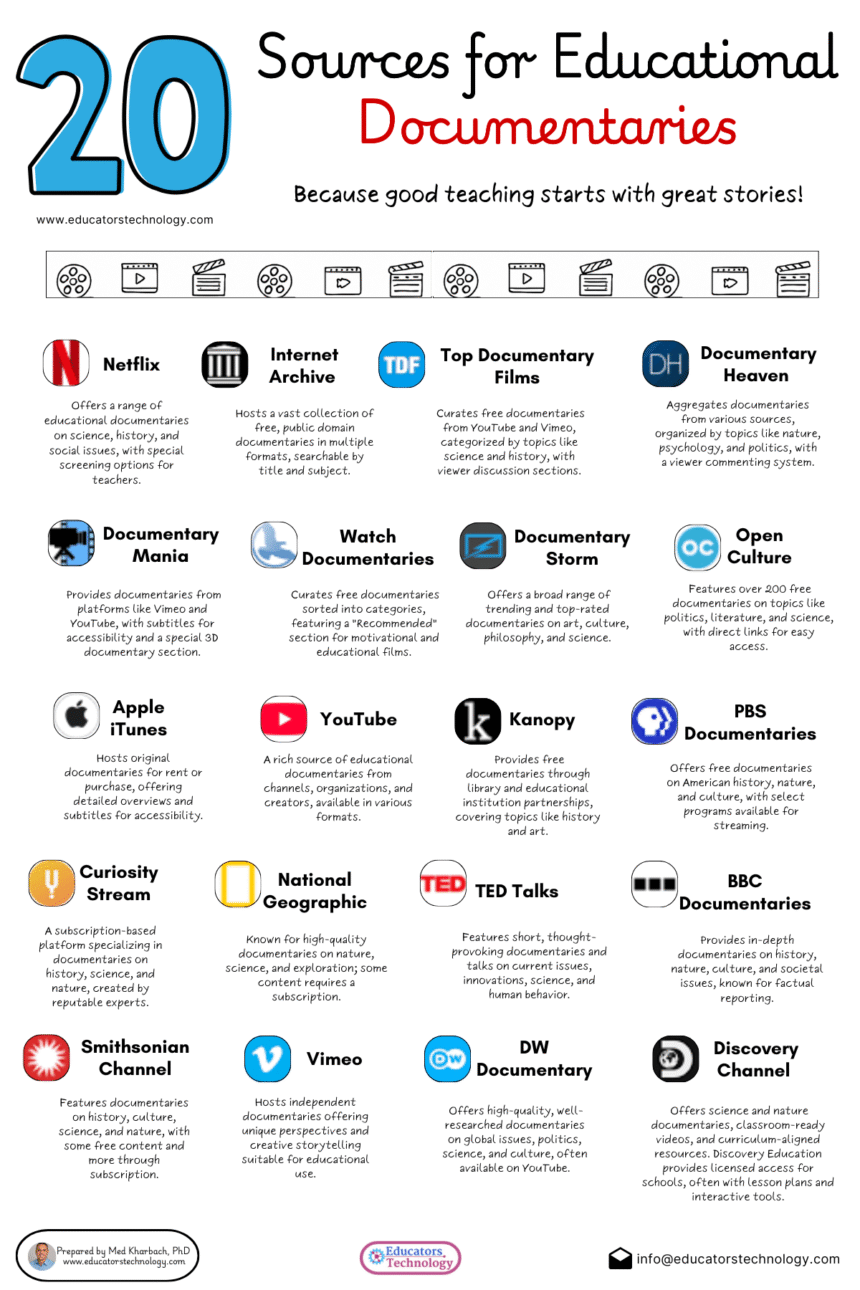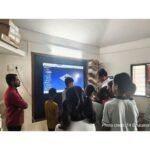Because good teaching starts with great stories.
Teachers have always known that stories stay with students long after the lesson ends. Documentaries offer that same power, real-world storytelling that sparks curiosity, builds empathy, and connects classroom content with lived experience. Whether you’re teaching history, science, or social studies, the right documentary can turn an abstract idea into something tangible and memorable.
Sources for Educational Documentaries
Below is a curated list of reliable sources where educators can find quality documentaries for every subject and grade level.
1. Netflix
A growing library of educational documentaries covering science, history, and social issues. Teachers can use Netflix’s classroom screening permissions for select titles.
2. Internet Archive
A massive collection of free, public-domain documentaries in multiple formats, all searchable by title and subject. Perfect for finding vintage or historical footage.
3. Top Documentary Films
Curates free films from YouTube and Vimeo, organized by topic (science, history, politics) and includes viewer discussion sections for classroom reflection.
4. Documentary Heaven
Aggregates documentaries from multiple sources and organizes them by theme—nature, psychology, politics, and more.
5. Discovery Channel
Science and nature documentaries with resources for schools through Discovery Education, including lesson plans and interactive tools.
6. Watch Documentaries
Free documentaries sorted into categories such as education, motivation, and culture. The “Recommended” section is ideal for classroom inspiration.
7. Documentary Storm
Offers a broad range of trending and top-rated documentaries on art, culture, philosophy, and science.
8. Open Culture
Hosts over 200 free documentaries on politics, literature, and science, each with direct links for quick classroom use.
9. Apple iTunes
Features original documentaries for rent or purchase, with subtitles for accessibility and detailed overviews for teachers.
10. YouTube
A goldmine of educational documentaries from verified creators, educational channels, and organizations—great for building custom playlists.
11. Kanopy
Free access through many school and public libraries. Offers documentaries on art, history, and culture with institutional licensing.
12. PBS Documentaries
Trusted documentaries on American history, culture, and current issues, with many programs available for classroom streaming.
13. Curiosity Stream
A subscription platform focused on history, nature, and science, featuring expert-created educational series.
14. National Geographic
Renowned for its visually rich documentaries on nature, exploration, and science. Some content requires a subscription.
15. TED Talks
Short, thought-provoking mini-documentaries and talks on innovation, human behavior, and scientific discovery.
16. BBC Documentaries
Known for factual, in-depth coverage of world events, culture, and history—ideal for classroom discussions and analysis.
17. Smithsonian Channel
Focuses on history, culture, and nature with free and premium options. Some content connects directly to Smithsonian exhibits.
18. Vimeo
Home to independent filmmakers and educational storytellers offering fresh perspectives and creative nonfiction content.
19. DW Documentary
High-quality, well-researched documentaries on global issues, politics, and science—many available free on YouTube.
20. Docuseek
A subscription-based streaming platform featuring documentaries from leading educational distributors like Bullfrog Films and Icarus Films. Designed specifically for academic and public library use, it provides rights-cleared content for classroom screening.
Teaching with Documentaries
To make the most of these resources:
- Pre-screen for relevance: Choose age-appropriate content that aligns with your curriculum.
- Use guiding questions: Help students analyze the filmmaker’s perspective and the evidence presented.
- Connect to inquiry: Pair a documentary with a class debate, research project, or reflective writing task.
- Encourage critical viewing: Ask students to identify bias, evaluate sources, and compare perspectives.









